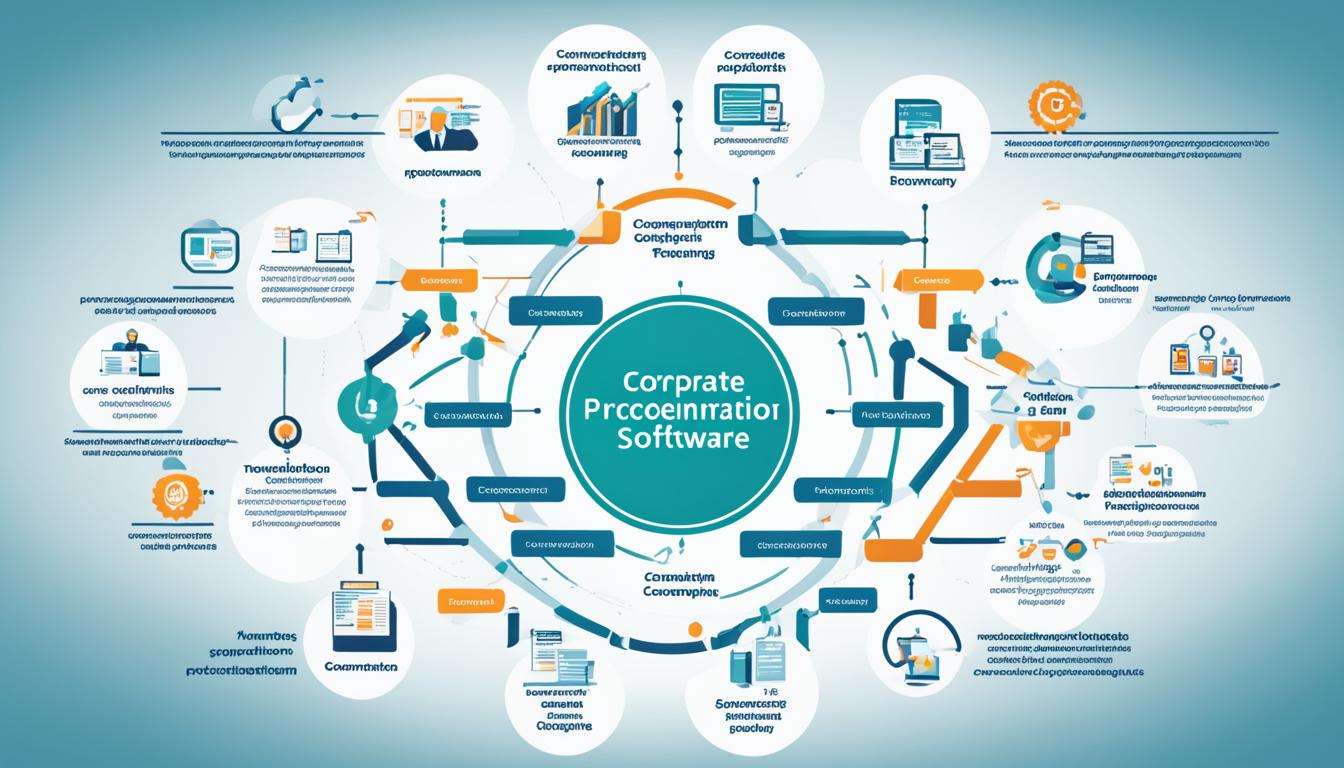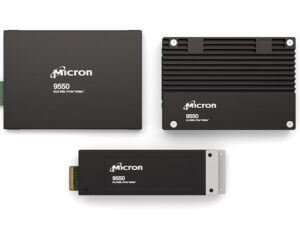The world of corporate software acquisition is complex. Strategic insight is as crucial as the money spent. Today, technology is key in businesses, making it essential to pick tech solutions wisely. The right way to buy software mixes careful analysis, understanding different corporate cultures, and planning ahead. This ensures each decision makes the company stronger and more capable.
When buying IT software, companies must take time to learn about their new tools. They need to see how these fit with their existing systems. A good match between a company and its tech can boost efficiency. It also strengthens a company’s ability to change and come up with new ideas in the digital world.
Key Takeaways
- Understanding the complexities involved in the software acquisition process.
- The significance of cultural compatibility in successful corporate software acquisition.
- Strategic integration as a critical factor when acquiring technology solutions for corporations.
- Assessing both the technological and cultural fit of potential IT software investments.
- Focus on adding tangible value through acquisitions rather than just expanding the corporate portfolio.
- The importance of maintaining system compatibility and the opportunity for innovation post-acquisition.
Evaluating the Risks in Small vs Large Software Acquisitions
When buying software for businesses, the size of the buy doesn’t always show the risk level. Small and large acquisitions each have their own challenges. They need careful planning. For small buys, often from new startups, balancing innovation and human talent is key. A wrong move here can mean a big loss of new ideas. This is a major risk when buying software solutions.
Large acquisitions come with their own issues. They spread risk across established parts of the business. This makes it easier to guess future results. However, merging big companies can cause tough problems. Effective company software acquisition strategies are crucial. Knowing the value and how things can work together is key. This helps both before buying and when joining everything together afterwards.
Here’s a look at the risks in both small and large software buys:
| Risk Categories | Small Acquisitions | Large Acquisitions |
|---|---|---|
| Financial Exposure | Concentrated, potentially more impactful per dollar spent | Spread out, large capital at stake but also large assets gained |
| Innovation Loss | High; key individuals carry significant weight in future developments | Moderate; diverse teams and established processes mitigate risk |
| Cultural Integration | High Risk; startup culture is fragile and can be easily disrupted | Varies; established companies may be resistant or welcome to change |
| Operational Disruption | Moderate; simpler systems but high impact if core team dissolves | High; complex systems and larger workforce create integration challenges |
The aim in acquiring software solutions is to keep disruption low and add value. Learning to handle the challenges of both small and large buys is key. It helps companies use new assets to succeed and create more value.
The Impact of Company Culture on Software Acquisition Success
In the corporate IT software acquisition world, company culture plays a huge role. A company’s culture affects if an acquisition will succeed or not. It’s not just about buying software, but also merging cultures together.

Understanding Startup DNA and Its Sensitivities
A big company needs to really get a startup’s culture during the software acquisition process. It’s important to see beyond just the basic facts. Startups often have a strong drive for innovation, close teams, and a deep commitment to their mission.
Why Preserving Startup Culture Post-Acquisition Matters
Keeping the startup culture alive after buying it is key for a successful merger. This means avoiding any big clashes and making sure creativity keeps flowing. It’s crucial to keep the startup’s unique spirit alive to avoid losing valuable team members and ideas.
When a startup keeps its culture while joining a larger company, amazing things can happen. This approach helps keep the startup’s original spark. It also promotes new innovations that can make the bigger company stand out.
Importance of Employee Retention in Technology Mergers
When companies buy purchasing software for organizations, success depends on more than just software. It relies on the people who built its success. Blending technology and talent is crucial for a smooth merger. Keeping employees happy while moving them to new roles requires understanding people and using retention bonuses wisely.

First, it’s vital to spot key employees early. These folks bring the skills, leadership, and vision needed after a merger. Keeping these key players helps keep things running smoothly. This helps blend cultures and operations smoothly.
Here are some top tips for keeping employees: Offer competitive pay and benefits for now and later. Make roles and advancement opportunities clear. Keep communication open to address any worries. Keep the company’s core values in the merger plans. Provide training or new skills to make employees feel invested in the merger.
- Crafting competitive compensation packages that include both short-term and long-term benefits;
- Setting clear expectations for roles and growth opportunities within the new company structure;
- Ensuring transparent communication that addresses employees’ concerns and questions;
- Embedding essential company values within the integration plan to maintain core cultural elements;
- Offering re-skilling or up-skilling opportunities to foster employee investment in the merger process.
Using the right incentives keeps employees motivated and aligns their goals with the company’s. These incentives help keep talent and the company’s unique culture. Let’s look at an example of effective incentives:
| Incentive Type | Brief Description | Expected Outcome |
|---|---|---|
| Sign-on Bonuses | Immediate rewards for joining the merged entity | Increase employee satisfaction and immediate buy-in |
| Retention Bonuses | Financial incentives offered after a specified period | Encourages employees to remain through critical integration phases |
| Stock Options | Access to company equity, vesting over time | Aligns employee interests with the company’s long-term success |
| Professional Development | Training and advancement opportunities | Encourages personal growth and loyalty to the organization |
Retaining employees during a corporate software acquisition needs foresight and tact. It’s about combining new and existing talents within a merged company. Finding the balance between new changes and old successes is key.
Strategic Techniques for Smooth Integration of Acquired Software Teams
In the world of corporate IT software acquisition, mixing different software teams after a buyout is tricky but key to success. It’s about combining the fresh ideas of startup teams with the resources of big firms. This requires careful planning and the use of company software acquisition strategies to ensure a smooth change and support teamwork.
Employing Long-Term Incentives to Nurture Talent
Creating long-term incentives is a great strategy. Reward plans that look ahead can really pull in and keep talent. These plans help new team members settle and grow, just like feeding a young plant helps it take root.
Aligning Acquisition Goals with Business Strategy
Also, it’s crucial to match software purchase for businesses with the buyer’s big goals. Carefully mixing these goals with the company’s vision not only eases transition. It also makes the investment last into the future. So, buying technology must be viewed as stepping stones for growth.
| Integration Phase | Focus Area | Strategic Actions |
|---|---|---|
| Pre-Acquisition | Cultural Assessment | Understanding and mapping the cultural landscape of the target acquisition. |
| Execution | Communication Planning | Implementing clear channels of communication to ensure transparency. |
| Post-Acquisition | Talent Retention | Introducing long-term incentives and aligning them with career advancement opportunities. |
| Ongoing Development | Strategic Alignment | Regularly revisiting and realigning acquired team goals with overall business strategies. |
In conclusion, a well-thought-out integration plan is essential. It needs to cover talent keeping, goal matching, and corporate IT software acquisition nuances. Doing this, companies will blend innovation and culture. And they’ll stay ahead in their fields.
Corporate Software Acquisition: Respecting Legacy and Customer Relationships
Buying technology for corporations is more than adding new software. It’s about keeping strong bonds and respecting the company’s history. At the core of a successful buy is realizing the value of the team’s past achievements. For companies looking to lead, the process must thoughtfully keep customer ties and honor the software’s history.
Planning a software buy means seeing the worth of existing customer relationships. These customers expect a certain kind of service and new ideas. So, keeping these ties shows respect for the bought company’s values. It also shows a promise to keep things stable, which helps keep customers after the buy.
Open sourcing technology shows a company’s respect for what the bought team added to tech. Letting the technology grow in an open community supports new ideas and brings people together. It also builds the company’s name as a supporter of shared progress.
- Preservation of pre-existing customer relationships.
- Honoring the legacy of the acquired software’s brand.
- Continuity of service and product excellence.
- Open sourcing to nurture ongoing innovation.
To wrap it up, buying technology is not just about the deal. It’s about weaving the new team and their software into the bigger corporate story. This approach keeps their legacy alive. It makes a smoother change that values respect and sets the stage for new ideas.
Key Strategies for Corporate IT Software Acquisition
Buying software in the business world is more than just making a purchase. It is a strategic step that needs careful thought. It involves looking closely at the options to add value to the company. A detailed process for choosing software helps match the company’s culture and operations. This lowers risks and helps the company succeed in the long run.
Assessing Fit: How to Vet Potential Software Acquisitions
When looking into buying software, companies need to thoroughly understand what makes a startup valuable. It’s important to look beyond the surface to find real gems that fit the company’s goals. By getting to know the software and the people behind it well, companies can avoid bad investments.
Choosing the right software means avoiding the lure of deals that don’t have a strong basis. It all comes down to making sure there’s a solid relationship and case for the purchase.
Post-Acquisition: Navigating the People Factor
After buying software, smoothly blending it into the company is key. This involves focusing on the ‘people factor.’ Assigning the right staff to guide everyone through the changes is crucial. It helps in dealing with worries and keeping everyone informed.
Building trust is central to success. Offering real rewards and keeping lines of communication open can help. The aim is to blend the new team’s spirit into the larger company culture. This keeps innovation alive and ensures the company continues to grow.




